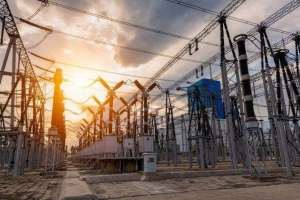Two highway projects, Piteşti - Sibiu and Ploieşti - Braşov, threaten to disturb the peace of Carpathian bears and to assuage the anger of amateur drivers who are fond of mountain landscapes or of road trips across Europe. Both of them involve crossing the Romanian segment of the Carpathian mountains and have long been the focus of the public and to a lesser degree of the Ministry of Transports, as shown by the statements made by a current minister and a former minister, respectively: the minister in office, Iulian Matache, gave an honest and logical answer when he was asked about the fate of the Ploieşti- Braşov during his term, saying "I don't know how long or how short my term is going to be", and his predecessor, Ioan Rus, oscillated with his typical dependability between considering Piteşti - Sibiu a highway one day and an express road the next, only to finally resign, exhausted by all the going back and forth.
Piteşti - Sibiu is a highway that has been insistently requested by Dacia Renault and very kindly recommended by the French Embassy in Bucharest, whereas Ploieşti - Braşov is a highway which is wanted by the owners of hotels and guesthouses in the Prahova Valley, of the Rucăr - Bran lane, and of Poiana Braşov, with many of them having mutual interests as the domestic politicians or being members of it. These two projects compete with each other and when looking at them on the map, they make up a wishbone which the Romanian government will have to break, because it is hard to believe that it will be capable of supporting two simultaneous "works of art" of that scale. The latter project isn't eligible to receive European funding, because it is not part of the pan-European transport corridor number IV, unlike the former, which also has the benefit of facilitating the travels of president Klaus Iohannis to his native hometown of Sibiu.
When used buy Romanian transports ministers, the word "priority" is ridiculous, or rather, denotes that there are financial interests of the parties they belong to, given what the priority of building highways actually means. For example, the project of the Piteşti - Sibiu highway has "advanced", while not actually moving forward, from the drafting of a first feasibility study, which cost 2.5 million Euros, to the drafting of a second feasibility study, contracted for 6.5 million Euros. The progress is obvious, but not for drivers, just for the consulting firms that win calls for tenders repeatedly organized by the generous Romanian state. Thus, another "pipe dream" highway.
Given these circumstances, it is not surprising that in June this year, the US embassy publicly warned about the habit of the Romanian authorities to contract feasibility studies which are superficial or outright obsolete. The appetite for such studies does not show that the Romanian government is smart or has a natural penchant for research, it just reflects the lack of will to help the country progress, which is hard to understand for foreigners.
A brief comparison: Slovenia is a European country which, in terms of its surface, (20,000 square km) and number of inhabitants (2 million), is ten times smaller than Romania. Keeping those ratios, it should have 10% of the total number of kilometers of highway which Romania has (696 km), in other words about 70 km. But Slovenia has 533 km of highway. By reversing that same proportion, Romania should have over 5,000 km of highway.
The Slovenian highway networks has capital Ljubljana as its hub and it cris-crosses the country, literally, as it forms two North-South axes, which are perpendicular with a long East-West axis, which all have their endings on Slovenia's borders with Croatia, Hungary and Italy. For comparison, Romania's first interconnection with the European highway network was made on July 11th, 2015. Slovenia has achieved that by launching in 1994 a National plan for the construction of highways, which it has actually adhered to, whereas Romania only completed the first "post-communist" segments of the Sun Highway in 2004. The essence of the Slovenian plan was to connect the Alps to the shore of the Adriatic Sea and to exponentially increase tourism revenue, by reducing the time needed to travel from one resort to the next as much as possible. In Romania, the construction of highways is still an issue in the context of the (as of yet!) unfulfilled desideratum to unite Romania's historical regions through the road infrastructure, while the local "barons" are short-circuiting the decision-making process at the level of the ministries responsible (see the project of the Bucharest - Alexandria highway, discussed by Liviu Dragnea, which is welcome, but not immediately necessary).
Because of the mountainous landscape, neither the Piteşti - Sibiu, nor the Ploieşti - Braşov highway is easy to build. For now, it can be seen how the evaluation, design, approval and auctioning stage is taking anywhere from five to ten years. For the first of them, the drafting of the feasibility study has just been restarted from scratch. In the case of the second, the uncertainty is complete: the segments of the Ploieşti - Braşov highway have been the object of multiple calls for tenders held by the government which have then been cancelled, without anything actually happening.
Between the two projects, the one that leads to Europe the fastest is the Piteşti - Sibiu highway and it can also have a greater effect on the country's economy, by clearly facilitating Romania's exports to the Community market. But at this snail's pace, the growth gap between Romania and the other countries of the European Union will not be closed during the lifetime of the current generations, but a lot later, and the benefits we want for our children will be late in appearing.
























































